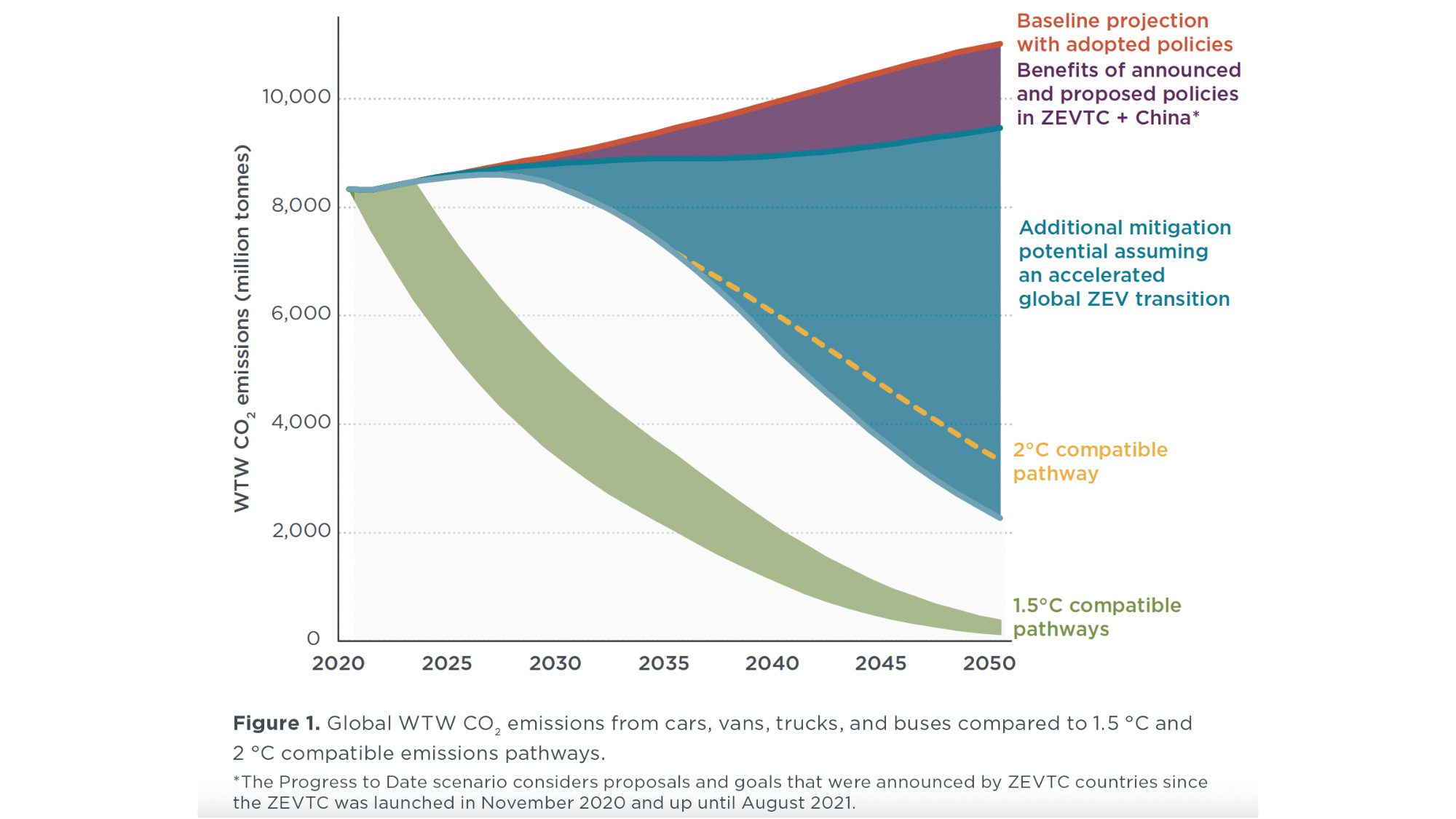Decarbonizing road transport by 2050: Accelerating the global transition to zero-emission vehicles
Working Paper
Emissions reduction benefits of a faster, global transition to zero-emission vehicles
The members of the Zero Emission Vehicles Transition Council (ZEVTC) are committed to accelerating a global transition to ZEVs. To help understand the likely impacts of both current policies and more ambitious ZEV policies, the authors of this paper use ICCT’s Roadmap model 1.8.2 to develop and model the well-to-wheel CO2 emissions impacts of an accelerated global ZEV transition (Ambitious scenario) and then quantify and compare it with currently adopted policies (Baseline scenario) and recently proposed and announced policies put forth by ZEVTC governments (Progress to Date scenario). The paper also considers these vehicle CO2 emissions pathways in light of what is likely needed to limit warming to 2 °C and 1.5 °C.
The analysis covers the entire global fleet of cars, vans, buses, medium trucks, and heavy trucks from 2020 to 2050. Results show that, assuming these vehicles use a share of the remaining global carbon budget to 2050 that is proportional to their 2020 share (21%), following through on recent proposals and announcements from ZEVTC governments and China (Progress to Date scenario) is expected to avoid 20 billion tonnes of CO2 emissions, more than one-fifth of the potential CO2 reductions that could be achieved by an accelerated global ZEV transition. These reductions are illustrated in the purple shaded area in the figure below, which also shows that such reductions are not enough to align with a 2 °C pathway. The need for more ambition regarding heavy-duty vehicles (HDVs) is especially evident among ZEVTC markets in this scenario, as cars and vans account for 88% of projected emission reductions. Meanwhile, the Ambitious scenario, which considers more stringent and comprehensive ZEV policies and more aggressive electricity grid decarbonization, results in a 73% reduction in vehicle CO2 emissions from 2020 to 2050 and is in line with a 2 °C pathway. To ensure compatibility with the best chances of 2 °C, ZEVTC governments should aim to transition at least 90% of their new car, van, and bus sales and three-quarters of truck sales to ZEVs by 2035, and partner with emerging markets and developing economies to transition at least 90% of global car, van, bus, and truck sales to ZEVs by 2040.
Still, considerably more ambitious actions in all regions and across vehicle types would be needed to close the gap with a 1.5 °C pathway, which is shown in the figure as the shaded green area (the lower bound of the green assumes vehicles use a proportional share of the remaining budget, whereas the upper bound assumes vehicles use 50% more than that). To maintain a 67% chance of limiting warming to 1.5 °C, ZEVTC members should consider even earlier transitions to 100% ZEV sales and complementary measures to accelerate fleet transitions to ZEVs. Such actions could include accelerating replacement of the existing vehicle fleet with ZEVs, maximizing uptake of efficiency technologies for conventional vehicles and ZEVs, and large-scale avoid-and-shift measures.

Attachments
Fact sheet: CO2 emissions reduction potential of an accelerated, global ZEV transition
